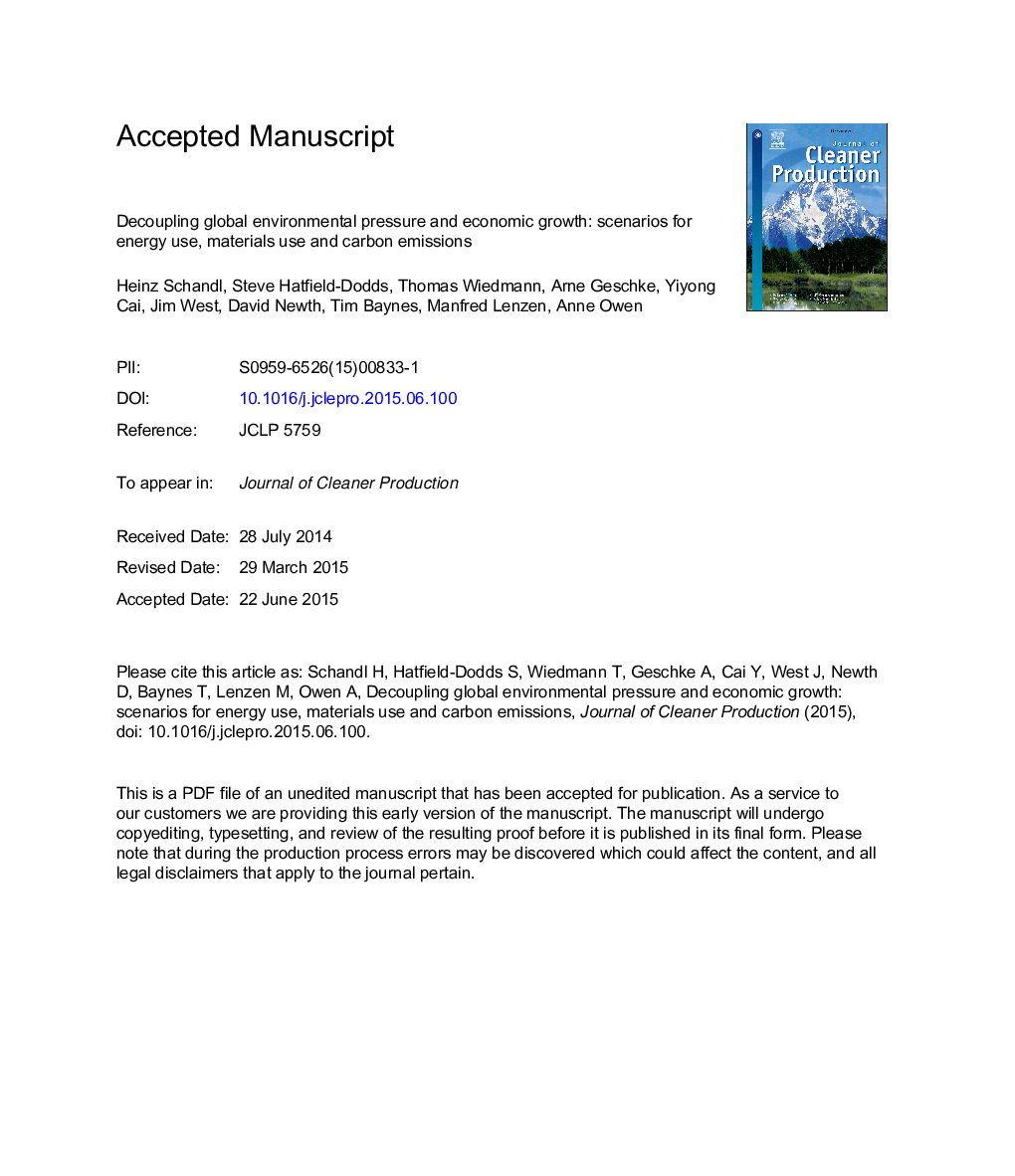| کد مقاله | کد نشریه | سال انتشار | مقاله انگلیسی | نسخه تمام متن |
|---|---|---|---|---|
| 8101440 | 1522117 | 2016 | 24 صفحه PDF | دانلود رایگان |
عنوان انگلیسی مقاله ISI
Decoupling global environmental pressure and economic growth: scenarios for energy use, materials use and carbon emissions
ترجمه فارسی عنوان
جداسازی فشار جهانی و رشد اقتصادی: سناریوهای استفاده از انرژی، استفاده از مواد و انتشار کربن
دانلود مقاله + سفارش ترجمه
دانلود مقاله ISI انگلیسی
رایگان برای ایرانیان
کلمات کلیدی
جدا کردن، توسعه اقتصادی، استفاده از مواد و انرژی، انتشار کربن، رد پا، مدل سازی یکپارچه،
موضوعات مرتبط
مهندسی و علوم پایه
مهندسی انرژی
انرژی های تجدید پذیر، توسعه پایدار و محیط زیست
چکیده انگلیسی
In recent decades economic growth and increased human wellbeing around the globe have come at the cost of fast growing natural resource use (including materials and energy) and carbon emissions, leading to converging pressures of declining resource security, rising and increasingly volatile natural resource prices, and climate change. We ask whether well-designed policies can reduce global material and energy use, and carbon emissions, with only minimal impacts on improvements in living standards. We use a novel approach of combined economic and environmental modelling to assess the potential for decoupling for 13 world regions and globally. We apply a production (territorial) and consumption approach to discuss regional differences in natural resource use and carbon emissions across three stylized policy outlooks: a reference case with no significant changes to environment and climate policies; a 'high efficiency' outlook involving a global carbon price rising from $50 to $236 (constant price) per tonne of CO2 between 2010 and 2050 and improvements in resource efficiency (rising from 1.5% historically to between 3.5% and 4.5% in the scenarios); and a 'medium efficiency' outlook midway between the 'no change' and 'high' outlooks. We find that global energy use will continue to grow rapidly under all three scenarios from 17 billion tonnes of oil equivalent (toe) in 2010 to between 30 and 36 billion toe. Carbon emissions would be considerably lower with a global carbon price, less than half the level of the reference case (29-37 billion tonnes of CO2 instead of 74 billion tonnes) and also material use would grow much more slowly under a carbon price and significant investment to increase resource efficiency (95 instead of 180 billion tonnes of materials). We find that OECD economies have significant potential to reduce their material throughput and carbon emissions with little impact on economic growth, and that developing economies such as China could expand their economies at much lower environmental cost. Globally, the effects of very strong abatement and resource efficiency policies on economic growth and employment until 2050 are negligible. Our study suggests that decarbonization and dematerialization are possible with well-designed policy settings and would not contradict efforts to raise human wellbeing and standards of living. The research demonstrates the usefulness of scenarios for unpacking environmental and economic outcomes of policy alternatives. The findings have important implications for future economic opportunities in a highly resource efficient and low carbon global economy to set human development and achieving the sustainable development goals on a more resilient path.
ناشر
Database: Elsevier - ScienceDirect (ساینس دایرکت)
Journal: Journal of Cleaner Production - Volume 132, 20 September 2016, Pages 45-56
Journal: Journal of Cleaner Production - Volume 132, 20 September 2016, Pages 45-56
نویسندگان
Heinz Schandl, Steve Hatfield-Dodds, Thomas Wiedmann, Arne Geschke, Yiyong Cai, James West, David Newth, Tim Baynes, Manfred Lenzen, Anne Owen,
